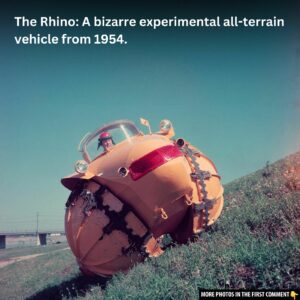In the early 1920s, luxury travel reached new heights in Australia, thanks to the collaboration between The White Motor Co., an American automobile manufacturer, and Smith & Waddington Ltd, a Sydney-based body manufacturer. Together, they created some of the most prestigious touring vehicles of the time, including the iconic White Charabanc, a 15-passenger excursion vehicle that left a significant mark on Australian automotive history.
The Origins of the White Charabanc
The White Motor Co., based in Cleveland, Ohio, was well-established by the early 1900s as a maker of both cars and trucks. In the post-World War I era, they began sending chassis to Australia to be fitted with locally-made bodies due to the scarcity of space and shipping restrictions that hindered the importation of complete cars. This led to a flourishing market for body manufacturers like Smith & Waddington Ltd.
Founded in 1921, Smith & Waddington was known for crafting luxurious hand-made bodies for imported chassis, particularly Rolls-Royce. Their expertise and high-quality craftsmanship soon gained a stellar reputation. The White Charabanc, with its spacious and elegant design, became one of the prime examples of their work.

Video
Watch this video to explore the evolution of sleeper cabs, from basic coffins to luxurious suites!
A Closer Look at the White Charabanc
The White Charabanc was designed to provide comfortable and luxurious travel experiences for tourists, specifically for trips to popular destinations like the Royal National Park and the Jenolan Caves. With a 15-passenger capacity, this vehicle was built to cater to groups of tourists, offering both a lavish ride and panoramic views.
The body of the charabanc was expertly crafted by Smith & Waddington at their Camperdown factory in Sydney. It featured ample space for passengers, alongside polished finishes and attention to every small detail, making it a true symbol of high-end craftsmanship from the 1920s.

Smith & Waddington’s Impact on Australian Automotive Industry
Smith & Waddington Ltd was a key player in the development of Australia’s motor body-building industry in the early 20th century. With the scarcity of imported vehicles during World War I, demand for locally manufactured bodies grew exponentially throughout the 1920s. Smith & Waddington was one of the first to capitalize on this trend, offering bespoke solutions for wealthy clients who sought luxury in every detail.
The company expanded its production to include not only luxury car bodies but also bus bodies to meet the growing demand for public transport. This shift toward bus production was influenced by the increasing population of Sydney, which saw a dramatic rise in the need for public transportation options.

The Evolution of the Charabanc and Bus Production
In the early 1920s, buses in Sydney were predominantly imported from America. Smith & Waddington, however, was one of the first to offer locally manufactured bus bodies. By 1925, they were producing up to 60 small, single-deck bus bodies every four months, which played a crucial role in the development of Sydney’s bus network. These buses were not only functional but were built to the same high standards as the luxury car bodies the company was known for.
The photographic collection of Smith & Waddington Ltd showcases various vehicles, including the charabanc and buses, as well as the design and production methods used during that time. These images provide a window into the aesthetics and advancements of motor body construction in the 1920s.

The Decline and Transformation of Smith & Waddington
Despite their success, the Great Depression of 1929 had a devastating effect on Smith & Waddington. With the collapse of the luxury car market, the company went into liquidation. However, it emerged under a new name, Waddington Body Co. Ltd, and shifted its focus to making double-deck bus bodies for the New South Wales Department of Road Transport and Tramways starting in 1935. In 1937, the company relocated to Granville, and during World War II, it was repurposed to manufacture aircraft hangars and freight wagons for the government.
Post-war, the company rebranded as Commonwealth Engineering Co. Ltd in 1946, and later as COMENG in 1963. It continued to manufacture buses, railway wagons, and passenger vehicles for transportation companies across Australia until its closure in 1989.

A Legacy of Excellence
The White Smith & Waddington Charabanc, alongside other vehicles crafted by Smith & Waddington Ltd, represents a pivotal moment in Australia’s automotive and transportation history. The craftsmanship of the era, particularly in terms of luxury vehicles and buses, laid the groundwork for the local motor body-building industry that would continue to evolve throughout the 20th century.

Today, these vehicles serve as a reminder of the industry’s golden age and the legacy of companies like Smith & Waddington, whose dedication to quality and innovation remains an integral part of Australia’s automotive heritage.
Video
Watch this video to discover 13 famous cars from the 1920s that we used to love driving!



